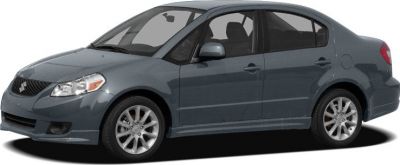 1959 Mercedes-Benz W120 Sedan (facelift 1959) Dimensions, Size & Specs
1959 Mercedes-Benz W120 Sedan (facelift 1959) Dimensions, Size & SpecsMeasurements of the 1959 Mercedes-Benz W120 Sedan, engineered for optimal performance and comfort
| Dimensions | |
|---|---|
| Length: | 4500 mm177.2 in14.8 ft |
| Width: | 1740 mm68.5 in5.7 ft |
| Height: | 1560 mm61.4 in5.1 ft |
| Weight Specifications | |
| Curb Weight: | 1065-1210 kg2348-2668 lbs |
| Maximal permitted Weight: | 1615-1660 kg3560-3660 lbs |
The Mercedes-Benz Ponton W120 Sedan facelift from 1959 represents a classic era of automotive design, produced from 1959 to 1962. This iconic sedan features a length of 4500 mm (177.2 inches), a width of 1740 mm (68.5 inches), and a height of 1560 mm (61.4 inches), combining compact yet spacious dimensions that suited the luxury sedan market of its time. Weighing between 1065 and 1210 kilograms (2,348 to 2,668 pounds) curb weight, this vehicle balances solid build quality and efficient road handling. The maximum gross weight ranges from 1615 to 1660 kilograms (3,562 to 3,659 pounds), reflecting its robust structural design and passenger capacity. The W120 Ponton is notable for its distinct, rounded styling that influenced Mercedes-Benz designs for years. Its size places it in the medium sedan category for the late 1950s and early 1960s, offering comfortable accommodation for passengers without sacrificing maneuverability in urban and suburban settings. The 1959 facelift brought subtle design tweaks while retaining the classic appeal, making this generation an attractive choice for vintage car enthusiasts and collectors interested in mid-century German automotive engineering. Its dimensions and weight contribute to its reputation for stability and ride comfort, hallmarks of the Ponton's enduring legacy in automotive history.
Discover the standout features that make the 1959 Mercedes-Benz W120 Sedan a leader in its class
Have a question? Please check our knowledgebase first.
The Mercedes-Benz Ponton W120 Sedan (facelift 1959) measures 4500 mm (177.2 inches) in length, 1740 mm (68.5 inches) in width, and 1560 mm (61.4 inches) in height. These dimensions reflect its mid-century sedan design, balancing passenger comfort with a practical footprint for urban and suburban driving environments. Its size was considered standard for family sedans of its era, providing ample interior space without excessive exterior bulk.
The curb weight of the Mercedes-Benz Ponton W120 Sedan facelift ranges from approximately 1065 kg to 1210 kg (2349 to 2668 lbs). For its production era (1959-1962), this weight was typical for a mid-size luxury sedan, balancing robust engineering and build quality with manageable mass. The weight impacts fuel efficiency, handling, and ride comfort, allowing the W120 to offer a stable yet responsive driving experience characteristic of Mercedes-Benz vehicles of that period.
The maximum weight, or Gross Vehicle Weight Rating (GVWR), of the Mercedes-Benz Ponton W120 Sedan facelift model ranges from 1615 kg to 1660 kg (3562 to 3659 lbs). This includes the vehicle's curb weight plus passengers, cargo, and fuel. The rating ensures optimal safety and performance limits, meaning the car was engineered to handle additional load without compromising structural integrity or driving dynamics, which is important for those carrying family or luggage.
With a height of 1560 mm (61.4 inches), the Mercedes-Benz Ponton W120 Sedan offers balanced interior headroom typical for a mid-20th century sedan. This height allows for adequate passenger comfort without making the vehicle too tall, which might affect aerodynamics or stability. In terms of driving visibility, the height contributes positively by giving the driver a reasonably elevated seating position with good sightlines over the dashboard and around the vehicle, which is advantageous in city and highway driving.
The Mercedes-Benz Ponton W120 Sedan facelift is 1740 mm (68.5 inches) wide, which was fairly standard for sedans of its era. This width provides adequate shoulder room in the cabin, allowing comfortable seating for up to five passengers. Additionally, the moderate width lends the car a balanced road presence that allows it to fit well within urban environments and narrow roads, while still maintaining sufficient stability and cornering performance.
Yes, the Mercedes-Benz Ponton W120 Sedan with its 4500 mm (177.2 inches) length, 1740 mm (68.5 inches) width, and 1560 mm (61.4 inches) height comfortably fits into a standard garage. Most residential garages are designed to accommodate vehicles up to approximately 4800 mm (189 inches) in length and around 2400 mm (94.5 inches) in width, so the Ponton fits within these common dimensional limits, allowing for easy storage without requiring special accommodations.
Compared to the earlier pre-facelift W120 models (1953-1959), the facelift version of the Mercedes-Benz Ponton Sedan maintained very similar overall dimensions, with minor tweaks primarily in styling rather than size. The original W120 models had comparable length and width, around 4500 mm in length and slightly narrower width, but the facelift improved aerodynamics and aesthetics. The consistency in size ensured continuity in cabin comfort and road handling while giving the car a refreshed and more modern appearance for the late 1950s and early 60s market.
When compared to similar mid-size luxury sedans from the late 1950s, such as the BMW 502 or Jaguar Mark 2, the Mercedes-Benz Ponton W120 Sedan offered a modest length of 4500 mm (177.2 inches) and curb weight ranging between 1065 and 1210 kg (2349 to 2668 lbs). The Ponton was slightly more conservative in size, focusing on reliability and engineering precision rather than sportiness. Competitors often varied slightly in length and weight, sometimes larger or heavier, but the Ponton balanced manageable size with typical Mercedes-Benz quality, making it a strong choice in its segment.
The Mercedes-Benz Ponton W120 Sedan (facelift 1959) comfortably seats up to five passengers. Despite its moderate exterior dimensions (4500 mm length, 1740 mm width, 1560 mm height), the car's design maximized interior space with spacious front and rear bench seats and ample head and legroom for its class. The balanced proportions ensured passenger comfort for family or executive use, with efficient packaging typical of Mercedes-Benz offering a good blend of comfort and practicality within a mid-size sedan footprint.
The 1959 facelift of the Mercedes-Benz Ponton W120 sedan brought subtle but important updates in styling and engineering. Design changes included a revised front grille, updated headlamps, and minor body contour refinements which refreshed its appearance. Mechanically, the facelift introduced improvements to ride quality, braking performance, and refinements to the suspension system. The W120 was known for its robust engineering, including a reliable inline-four engine and a focus on durability and safety, helping it maintain its reputation as a solid luxury sedan for the late 1950s and early 1960s.
Discover similar sized cars.

| Production: | 2015-2018 |
|---|---|
| Model Year: | 2015 |
| Length: | 4425 mm174.2 in |
| Width: | 1695 mm66.7 in |
| Height: | 1505 mm59.3 in |

| Production: | 2012-2017 |
|---|---|
| Model Year: | 2012 |
| Length: | 4425 mm174.2 in |
| Width: | 1695 mm66.7 in |
| Height: | 1505 mm59.3 in |

| Production: | 2010-2016 |
|---|---|
| Model Year: | 2010 |
| Length: | 4452 mm175.3 in |
| Width: | 1705 mm67.1 in |
| Height: | 1480 mm58.3 in |

| Production: | 2017-2019 |
|---|---|
| Model Year: | 2017 |
| Length: | 4440 mm174.8 in |
| Width: | 1695 mm66.7 in |
| Height: | 1495 mm58.9 in |

| Production: | 1959-1961 |
|---|---|
| Model Year: | 1959 |
| Length: | 4500 mm177.2 in |
| Width: | 1740 mm68.5 in |
| Height: | 1560 mm61.4 in |

| Production: | 1956-1959 |
|---|---|
| Model Year: | 1956 |
| Length: | 4485 mm176.6 in |
| Width: | 1740 mm68.5 in |
| Height: | 1560 mm61.4 in |

| Production: | 2007-2009 |
|---|---|
| Model Year: | 2007 |
| Length: | 4490 mm176.8 in |
| Width: | 1730 mm68.1 in |
| Height: | 1545 mm60.8 in |
